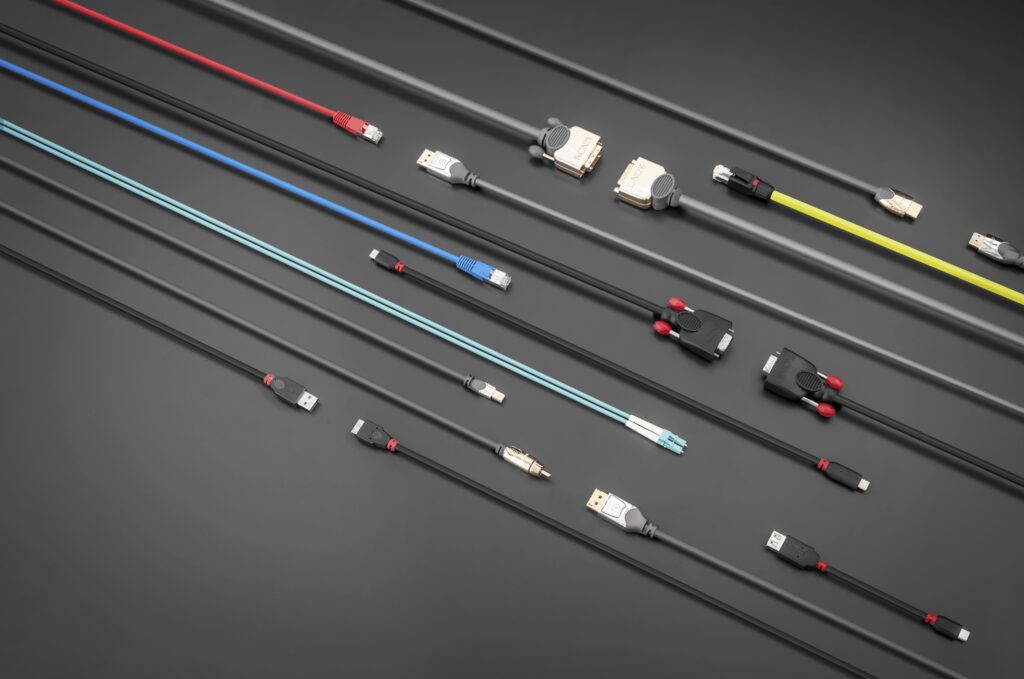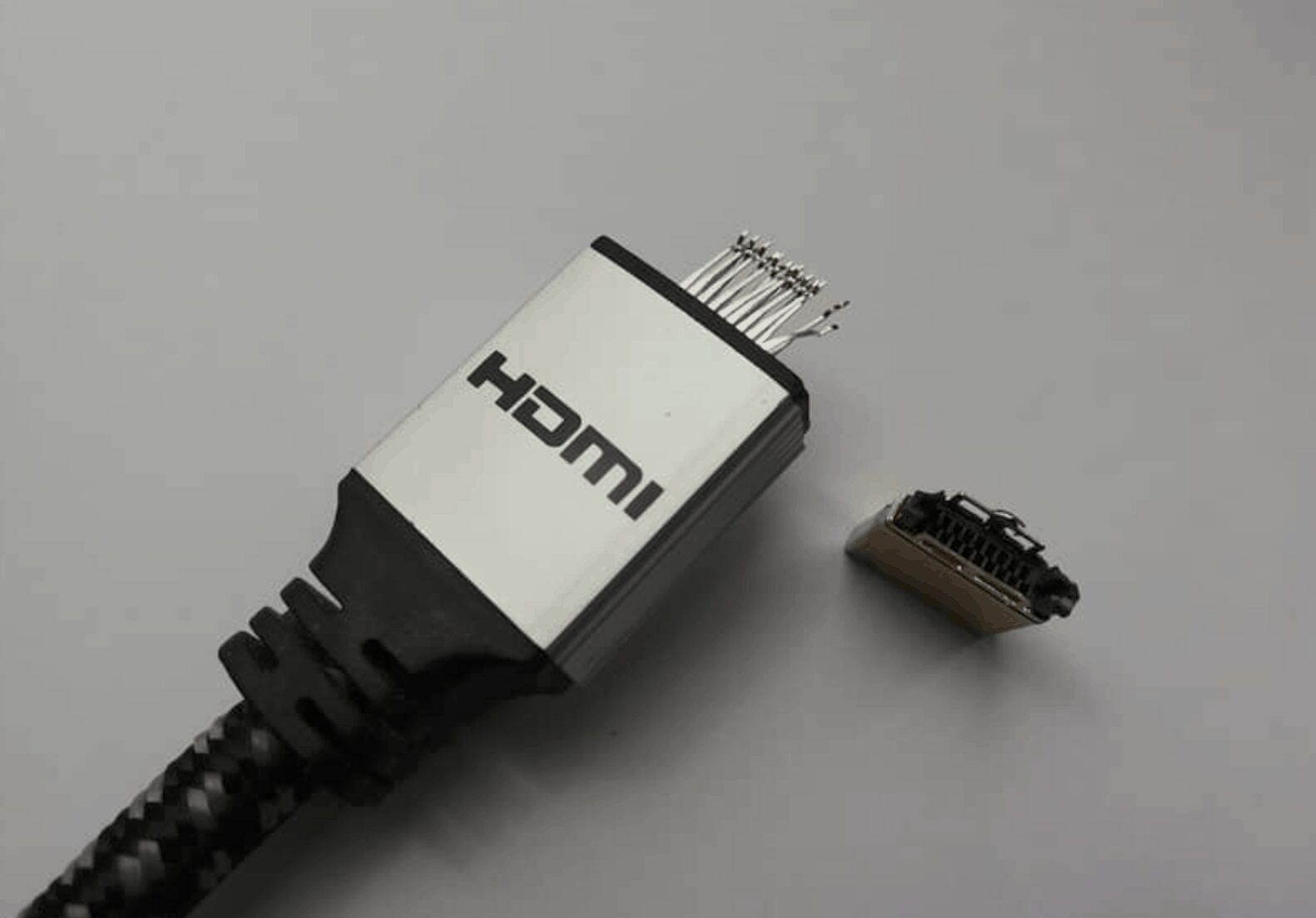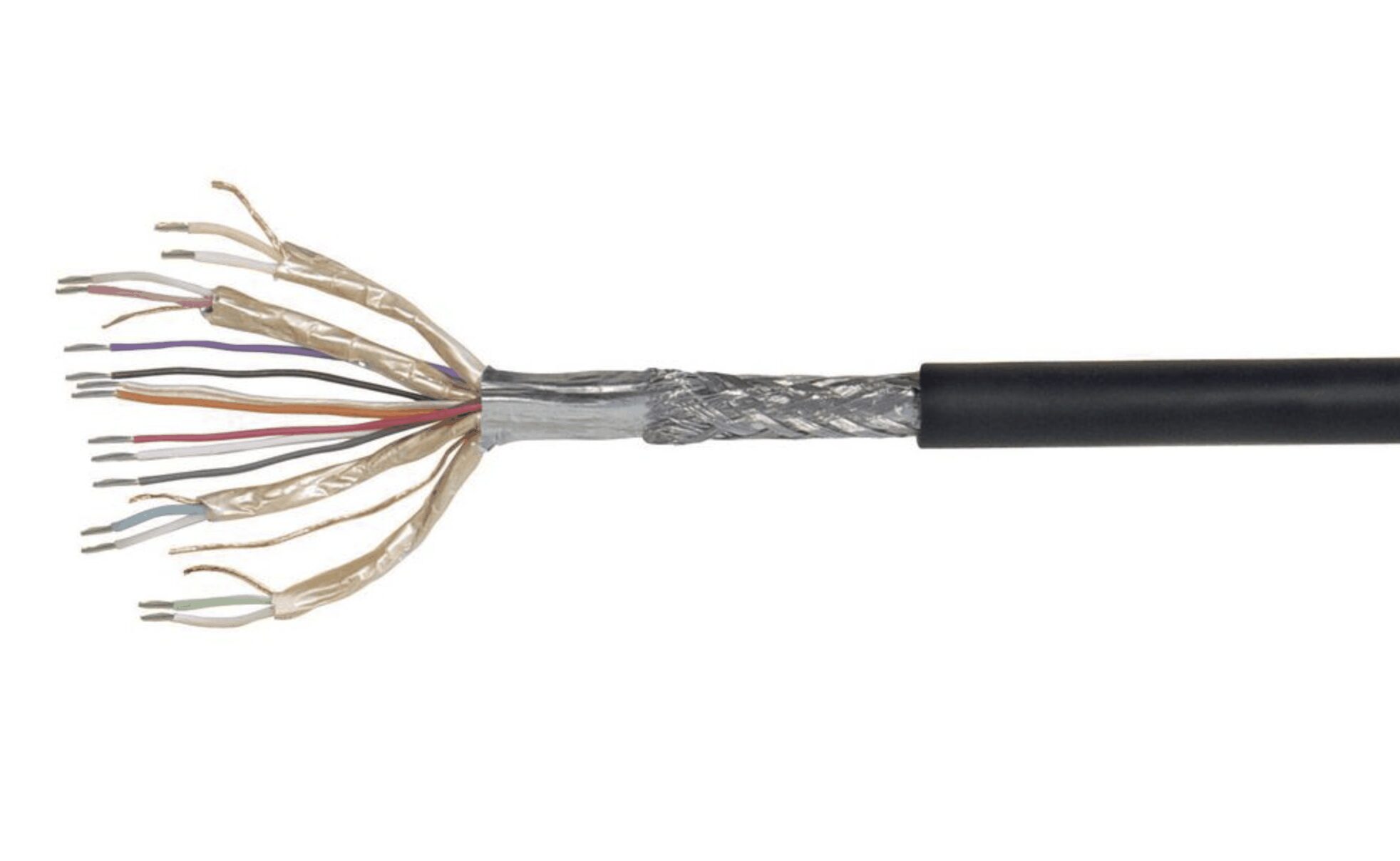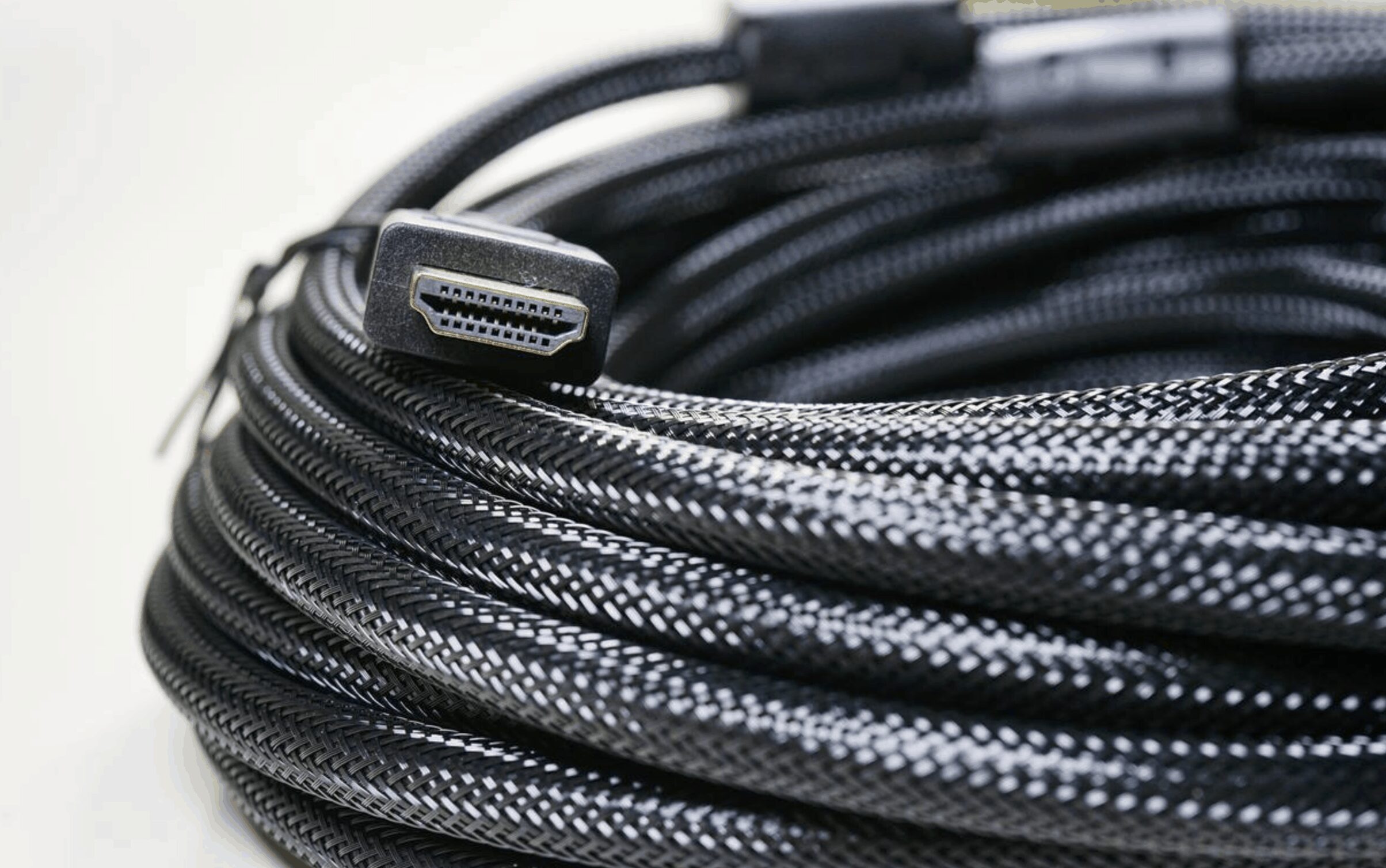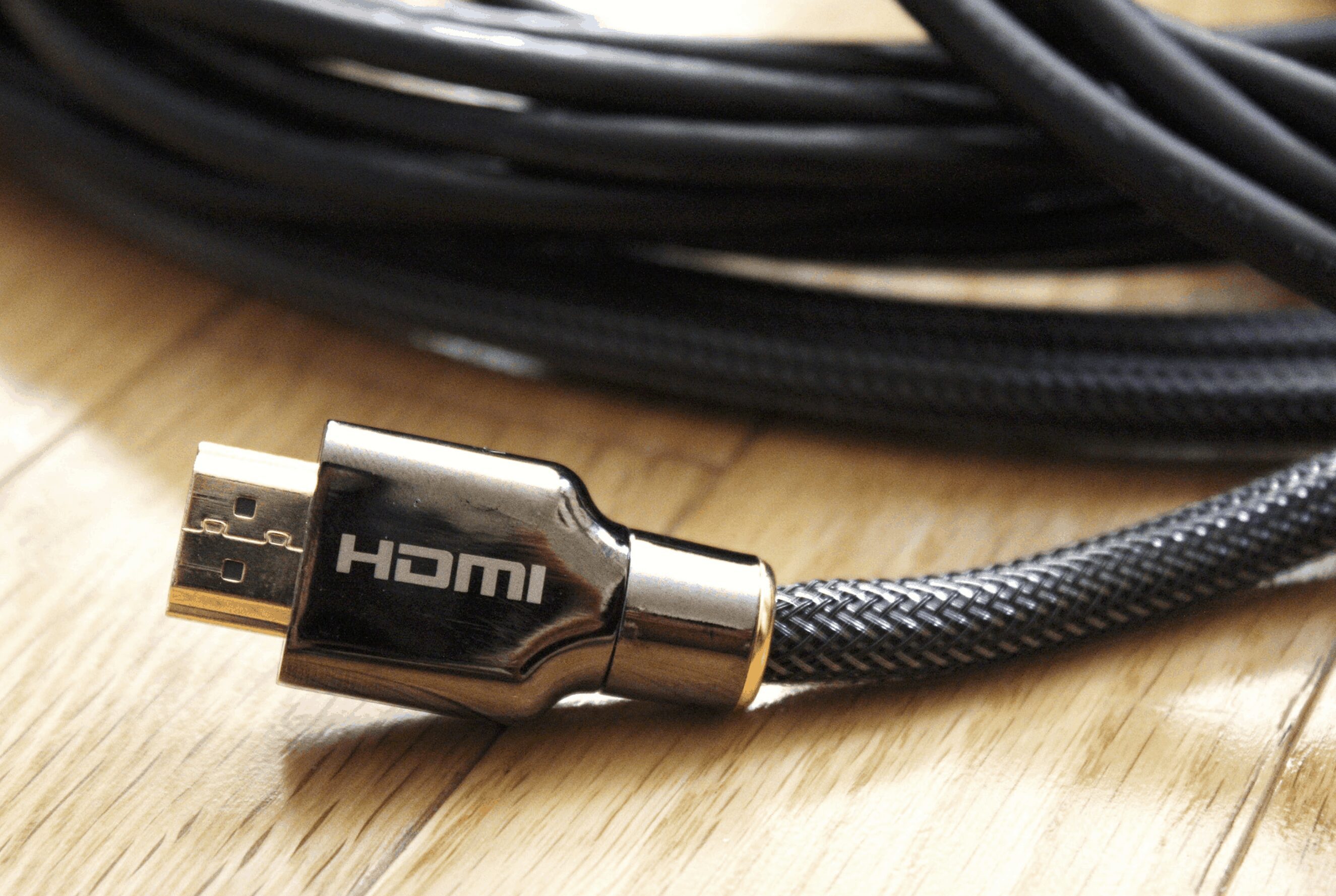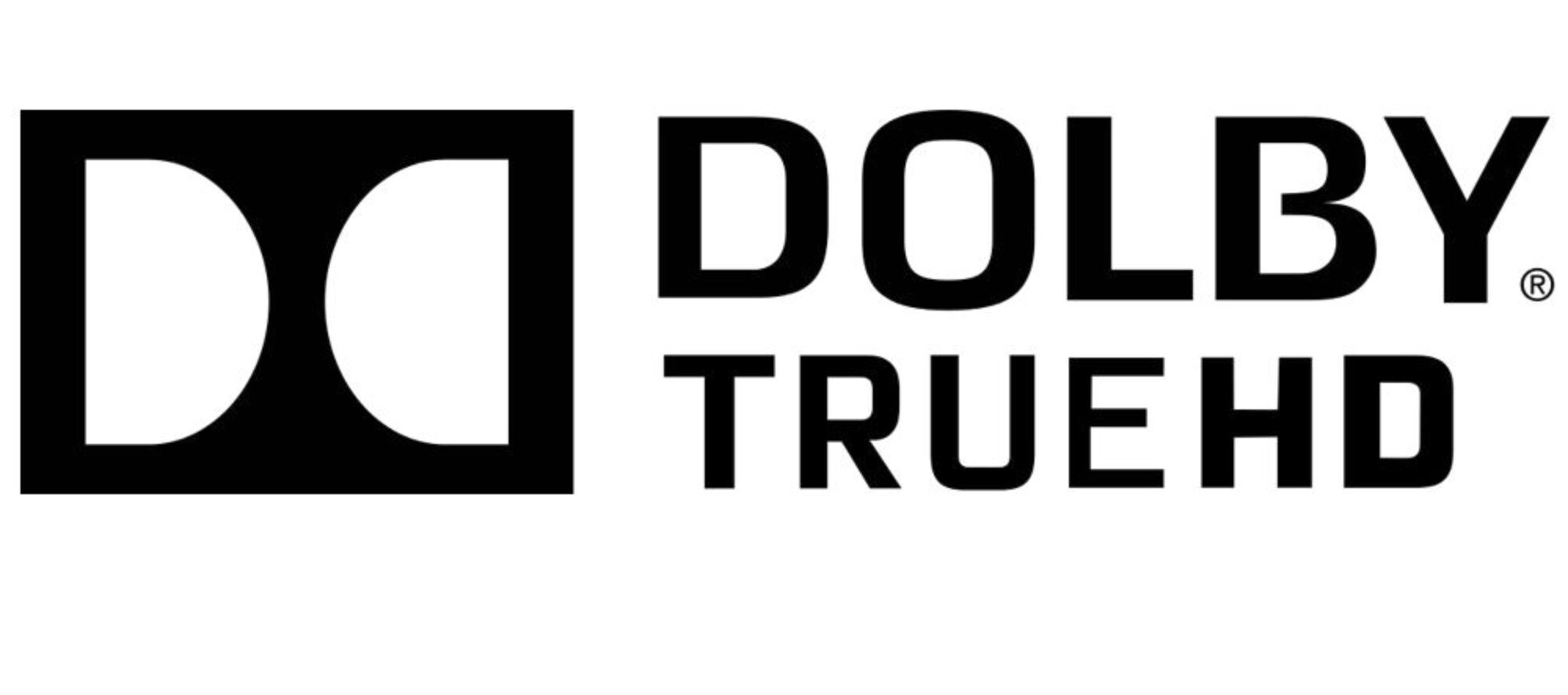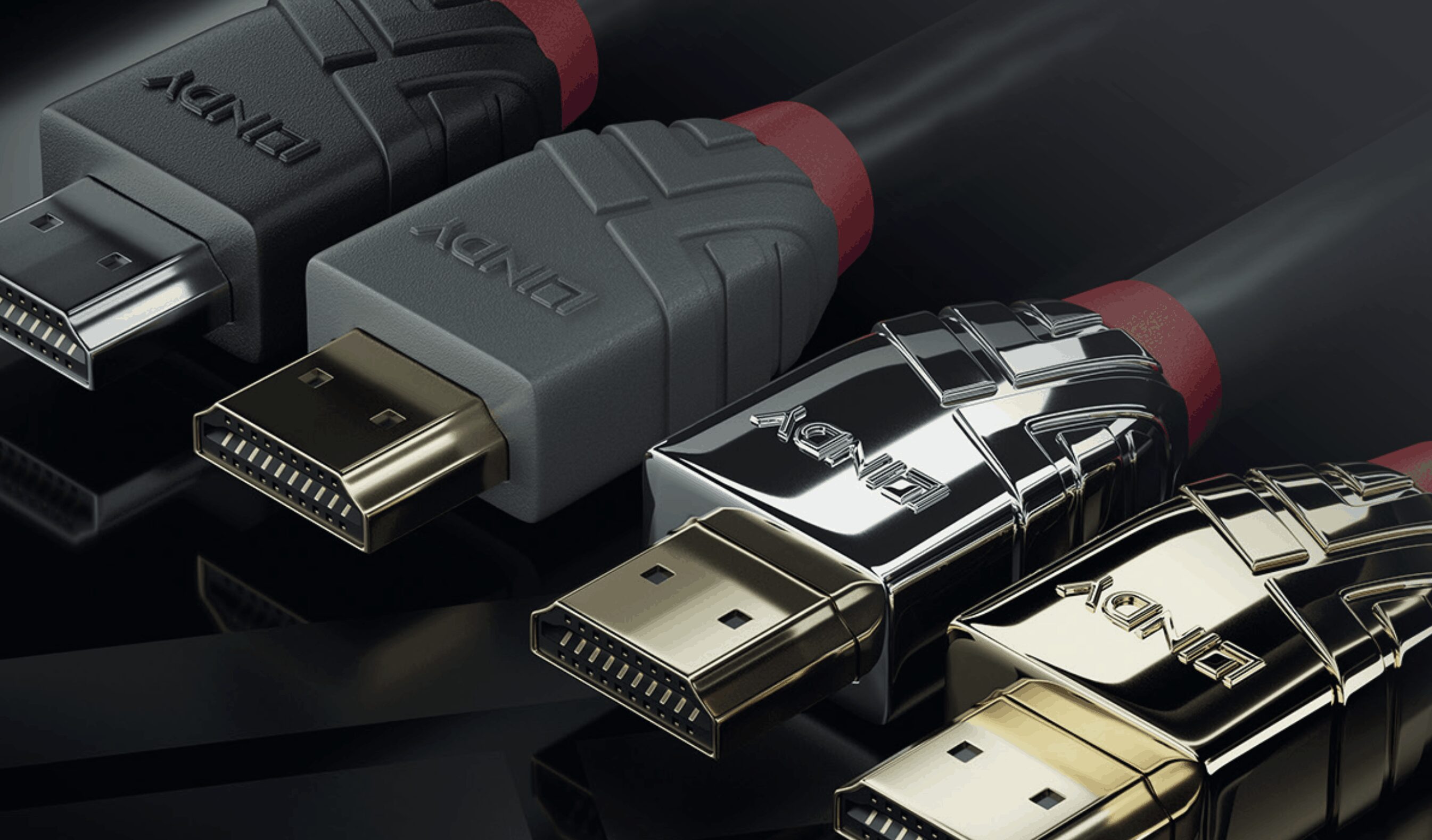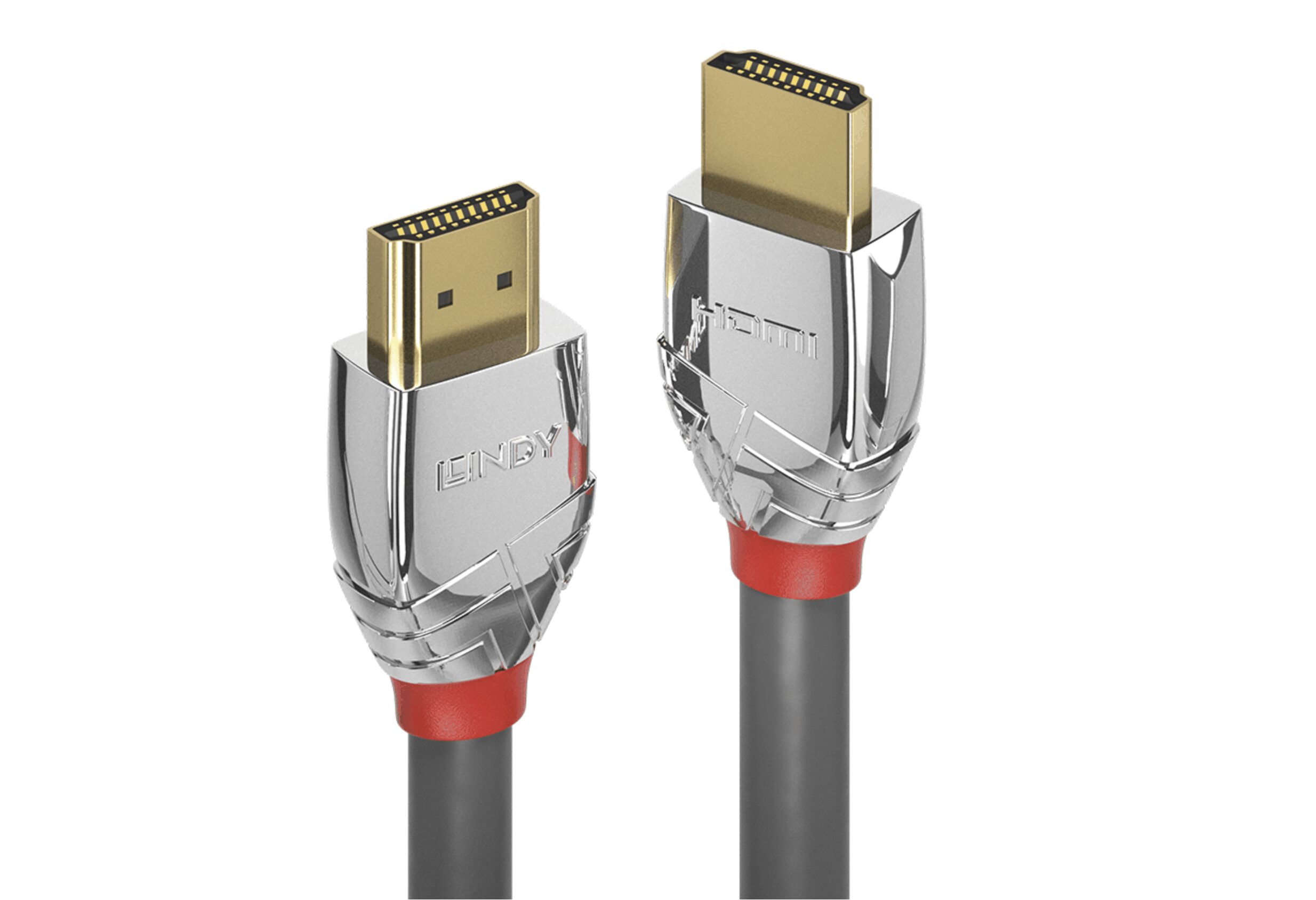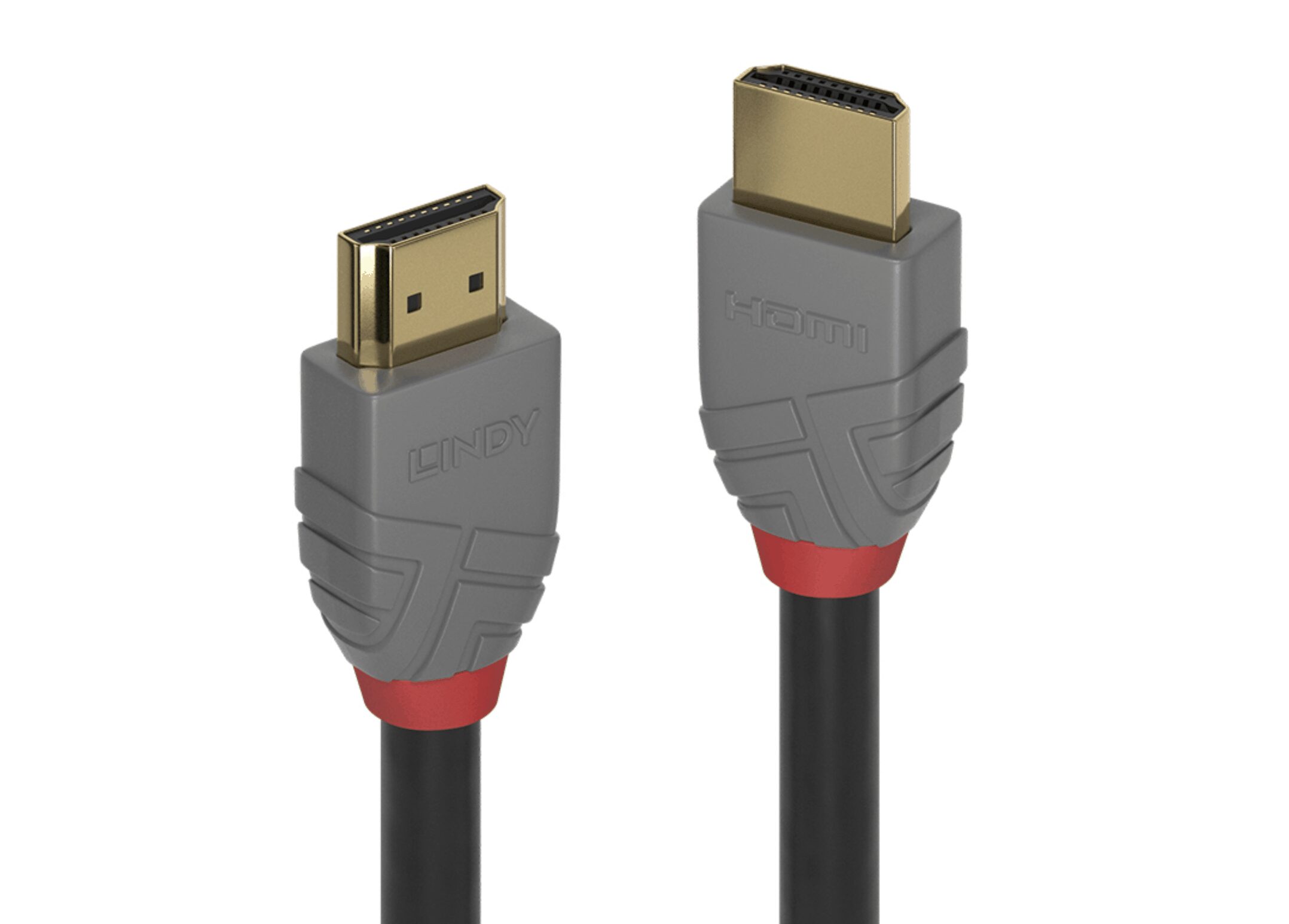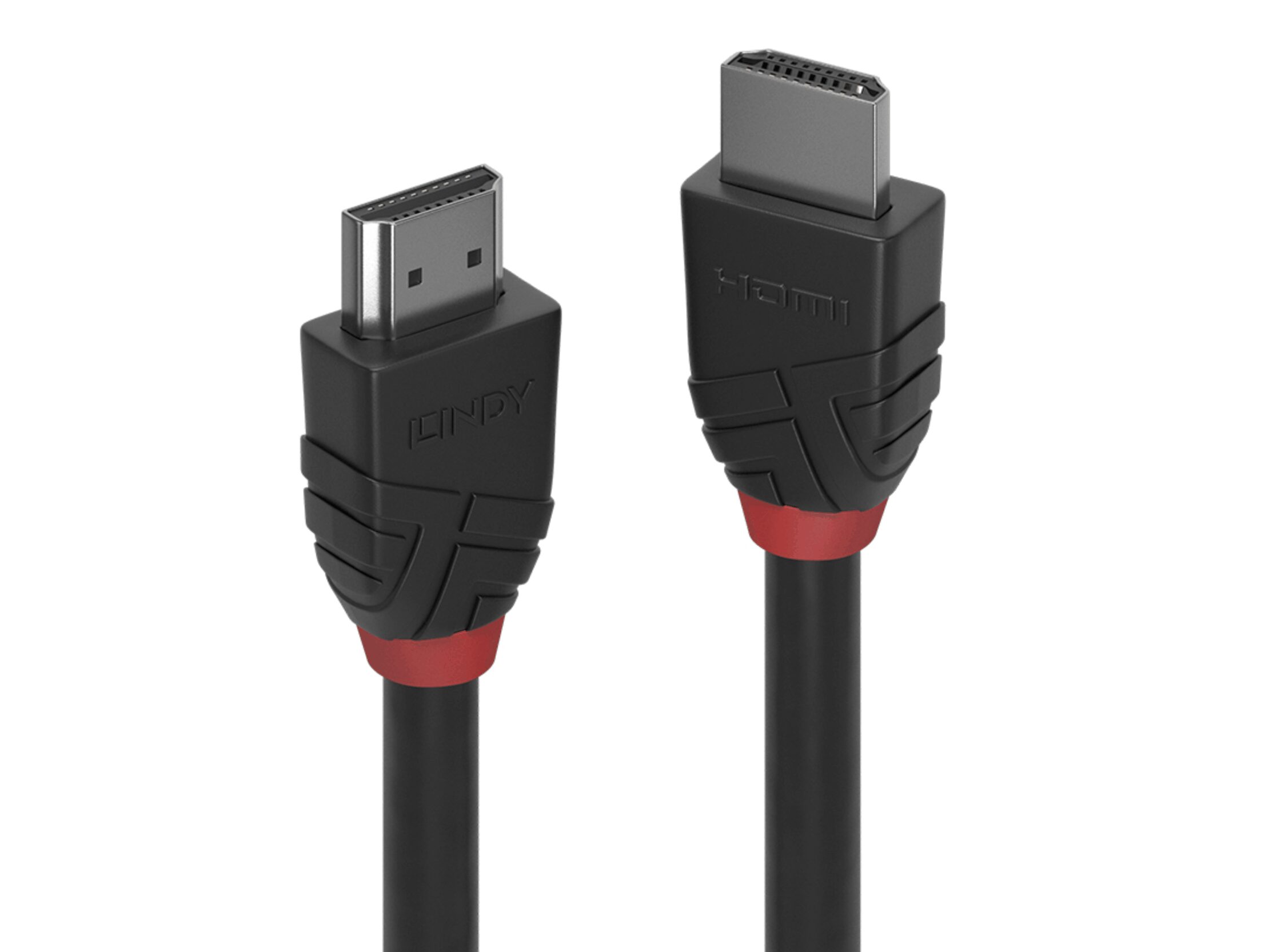When it comes to choosing an HDMI cable, as you are doom-scrolling in the list of thousands of similar-looking cables with different prices, a question is sure to pop into your head: what in is the difference between them? How different is a high-speed HDMI cable from a regular one?
The answer to those questions can be as simple or as complicated as you want. And we have sections dedicated to both types of responses!
What is an HDMI cable?
The short answer
HDMI cables transmit digital information, which is to say zeros and ones. So, as long as the binary codes are transferred, there is technically no difference between the various cables. After a brief testing, if the audio and video seems okay, then the cable is working as advertised and you can go ahead with your purchase.
But that is not a very high bar to cross. And as with most things, things are not as simple as they may seem. So, we insist that you read the next section.
The long answer
It is true that HDMI cables transmit nothing but zeros and ones, but the way the data reaches from the transmitter to the receiver through the cable, is very much analog. They are also a lot more complicated than analog cables, which makes them prone to certain shortcomings that are easy to ignore when you are looking at a list of HDMI cables and you see an Amazon Basic cable with decent ratings and competitive pricing.
So, think twice about whether you should be considering a high-speed HDMI cable. Mind you, we are not knocking on the Amazon Basic cables; they are serviceable enough for most use-case scenarios, especially if the cable you are looking for is under half-a-meter and you are not transmitting much more than 1080p footage @60hz.
Cables are under more strain nowadays
HDMI cables are under a lot more strain now compared to the footage that we would consider standard a decade ago. High-speed HDMI cables of today (HDMI 2.1) can transmit up to 48Gbps of data, which supports 8K footage, whereas these resolutions and bandwidths would be unimaginable less than 10 years ago.
As a result, while standard, ordinary HDMI cables would have more than sufficed until image standards had been stagnant, with the current standards seen in modern GPUs and gaming consoles, the strain on basic HDMI cables may prove too much for them to be able to give consistently good video or audio. This is exactly why there seems to be more HDMI cables breaking under the newfound strain that previously was not there.
Factors to consider when buying an HDMI cable
Cable length
One crucial factor that you must consider is that the longer the cable gets, the better the build quality and the thicker it needs to be. The reason for this is voltage drops that can cause jitter in the audio or video. Yes, jitter is not only a problem in analog data transmission; you can still experience jitter in digital data transmission. And you will know you have jittery footage when you see artifacts in the image or even a complete loss in certain cases.
Generally, up to 1.5 meters, you can get away with cables as thin as 32 gauge, whereas if you are going for cables above 5 meters, you should at least opt for 26-gauge cables minimum.
Build material
Copper over steel wiring
Cheaply made HDMI cables often use steel wiring, and steel is not a great conductor. You may also see copper coated steel used in the wiring, which is not very different. The best option is, of course, pure copper wiring.
You also don’t need to have the wiring to be coated in silver or platinum or… unobtanium! This is a common area where ridiculously expensive cables try to sell snake oil to customers by over engineering aspects of the product that yield no benefit to the customer.
Gold-plated connectors
Another way that manufacturers trick consumers is by using terms like “gold-plated connectors” too loosely. Yes, gold-plated connectors do help with the longevity of the connectors at both ends of the cable, especially if you frequently connect and disconnect the cable.
But often, consumers think that the part that should have the gold-plating is on the outside of the connectors, whereas it is the contact points, the pins, at both ends of the cable that would benefit from gold-plating. Of course, there is nothing wrong with coloring the outside of the connectors gold, as long as the insides are also gold-plated.
Cable gauge
There is a general rule of thumb when it comes to the thickness of the cables: if you are buying an HDMI cable that is any longer than 1.5 meters, you should not get a cable that is any thinner than 32 gauges.
“Gauge” is how we measure the thickness of cables and, quite unintuitively, the lower the number, the thicker the cable is. If you are buying a longer cable and still using thin, cheap cables, a problem you may run into is signal attenuation or interference. Below are some numbers to give you perspective:
If you want to purchase a 3-meter cable, don’t purchase one that is thinner than 30 gauges.
If you are getting a 5-meter cable, make sure it’s at least 26 gauges
You will struggle to find anything above 24 gauges (as in 23, 22, and lower) as at that point the cable becomes too thick and unwieldy to be viable for any kind of ordinary use. But the takeaway here is, pay attention to the length of the cable that you are buying and whether or not it is too thin for that length.
Extra features
There are various extra standards that a cable can comply with to offer boosts to its performance in audio or video. Below, we will go over some of the standards you may encounter as you are browsing for an HDMI cable to suit your needs. You will typically find these features in high-speed HDMI cables as opposed to basic ones.
AOC
In practice, an HDMI AOC cable doesn’t do much different from a standard HDMI cable, but it is certified to work over much longer distances than a regular 3-meter cable.
AOC cables, which stands for Active Optical Cable, achieve this feat by receiving extra current from the source via a traditional copper cable but uses optical fiber between the connectors. This is how AOC certified cables are able to bend the general rules of thickness over long distances.
If you look at AOC certified cables, you will actually find that they are quite thin, because of the use of fiber optics. The catch is, they are expensive, and thus, unfit for most general home uses.
Dolby TrueHD
This lossless 16-channel audio codec is developed for home entertainment systems, that is especially good for playing Blu-Ray discs or other compatible hardware. TrueHD is actually Dolby’s successor to its lossy Dolby Digital counterpart of the old days. Dolby TrueHD is a competitor to other lossless surround standards, such as DTS-HD Master Audio.
What this standard enables, outside of the 192kHz sampling rate and a depth of up to 24 bits, is to allow for metadata to be transmitted through the cable, that allows for non-audio information to pass through that can then be used to interpret said audio data. Among such non-audio information are features like audio normalization, dynamic range compression, along with Dolby Atmos metadata that allows for more advanced spatial placement of objects in a surround sound system.
HDMI ATC certificate
HDMI ATC (Authorize Test Centers) is a forum that has global testing centers that manufacturers of HDMI cables can enquire for testing.
If a cable receives the ATC certificate, it means that it has gone through much more rigorous testing than an average cable and is much more likely to work in odd, non-straightforward scenarios and is more resilient to wear and tear. They also typically have longer warranty periods.
Final points
The Gold Line is a complete HDMI cable that is every bit as performant as it is stylish. It is on the higher end of the price spectrum when compared with other cables, but the specs and the looks of the Lindy Gold Line HDMI cables are difficult to contend with. It ranks highest in the lineup of Lindy HDMI cables.
Lindy Cromo Line cables
If you want almost all the goodies offered by Lindy’s Gold Line cables in a more budget-friendly package, you need to focus your attention on Lindy’s Cromo Line cables.
The Cromo Line also comes in two variations, High-Speed and Standard, depending on the size (up to 10m). Outside of the relatively higher 30 gauge compared to the 24 of the Gold Line, you are missing nothing from the more premium model.
With the Cromo Line, you are still benefiting from top-notch build quality, thick cables, a mirror finishing on the connector hoods, gold-plated contact pins, 18Gbps bandwidth on the High-Speed models and 10Gbps for the lower speeds with 4:4:4 and 4:2:0 chromatic subsampling respectively. These cables also offer the same excellent triple-shielded cable for EMI and RF resistance, so your 32-channel audio can transfer uninterrupted.
Lindy Cromo Line cables are much more cost-effective than their Gold Line counterparts as they are the perfect option for home use on shorter lengths.
Lindy Anthra Line cables and Lindy Black Line cables
The Anthra Line and the Black Line also come with the same exact feature set explained in the Cromo Line, but bring down the price even more by using PVC instead of metal in the connector housing as well as the cable.
These entry-level Lindy HDMI cables come in 30 gauge but do not offer models longer than 5 meters. Otherwise, you would be enjoying the same great specs as the Cromo Line which include: thick 8.5mm diameter cable, gold-plated contact pins, 18Gbps for 4K streams @60hz with full 4:4:4 chroma subsampling, triple shielded wires for minimal EMI and RF interference, and 32 channels for audio transmission.
Lindy’s Anthra Line and Black Line are no brainers if you are just looking for a simple no-frills, high-speed HDMI cable that does the job perfectly for at least 10 years (as per the warranty suggests). The only difference between them is that the Anthra Line is a black cable with grey connector housings while the Black Line is all black. (except for the red accent that is present on all Lindy HDMI cables as signature)
Interested in learning more about Lindy HDMI cables?
As the official distributor of Lindy’s products in MENA, Newcom offers a wide range of high-speed HDMI cables by Lindy including those mentioned above.
If you are interested in any of the products discussed in this article, please make sure to check out our products page. For further information or any inquiries, make sure to directly call us or reach out through our Contact Us page.
To make sure you are the first to find out about the latest Lindy releases in the region, be sure to frequently check out our blog posts.
